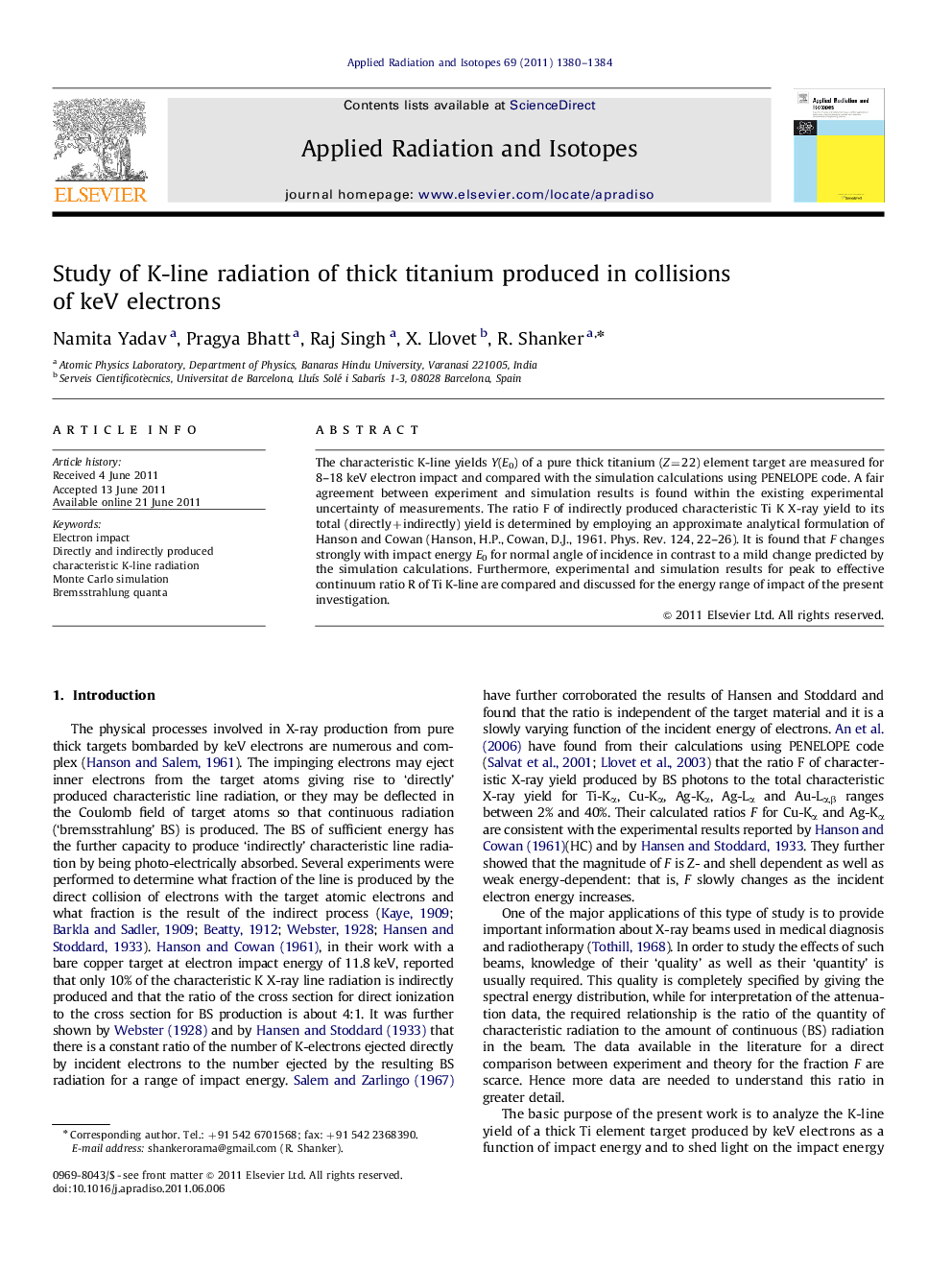| Article ID | Journal | Published Year | Pages | File Type |
|---|---|---|---|---|
| 1876431 | Applied Radiation and Isotopes | 2011 | 5 Pages |
The characteristic K-line yields Y(E0) of a pure thick titanium (Z=22) element target are measured for 8–18 keV electron impact and compared with the simulation calculations using PENELOPE code. A fair agreement between experiment and simulation results is found within the existing experimental uncertainty of measurements. The ratio F of indirectly produced characteristic Ti K X-ray yield to its total (directly+indirectly) yield is determined by employing an approximate analytical formulation of Hanson and Cowan (Hanson, H.P., Cowan, D.J., 1961. Phys. Rev. 124, 22–26). It is found that F changes strongly with impact energy E0 for normal angle of incidence in contrast to a mild change predicted by the simulation calculations. Furthermore, experimental and simulation results for peak to effective continuum ratio R of Ti K-line are compared and discussed for the energy range of impact of the present investigation.
► Total K-line yields of thick Ti produced by keV electrons are experimentally determined, the corresponding simulation results compare fairly well with them. ► Observed total K-line photons are found to be 4–5 times larger than the photons in effective continuum in the investigated energy range. ► Indirectly produced K-line quanta are analyzed in light of Hanson and Cowan's approximate analytical formulation. ► Fraction of indirectly produced K-line quanta is only about 1% of the total quanta at the lowest impact energy unlike the simulation results. ► Hanson and Cowan's analytical formulation is found to be deficient to predict the energy dependence of indirectly produced K-line radiation and needs further modifications.
